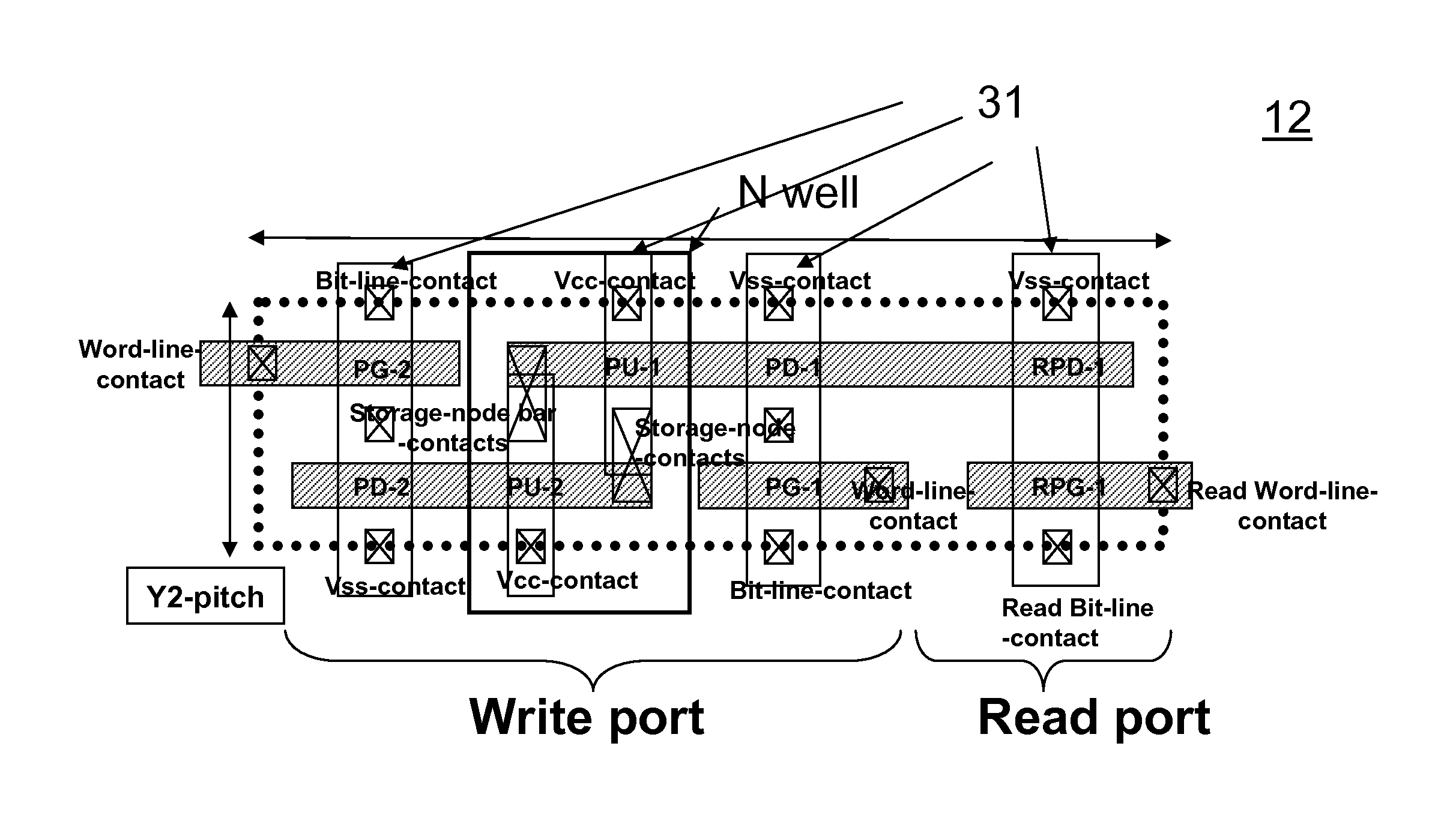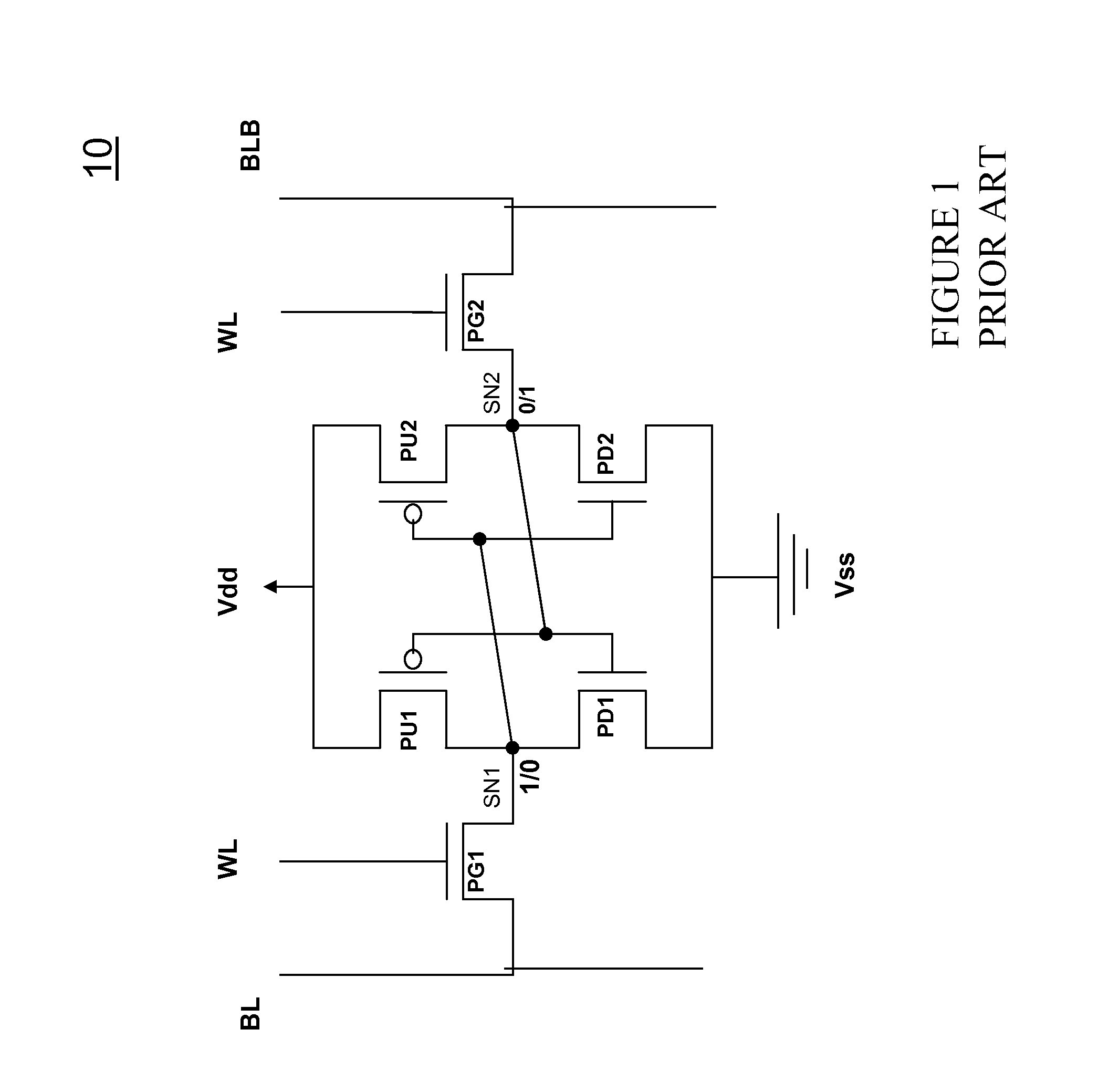Embedded SRAM Memory for Low Power Applications
a low-power, embedded technology, applied in the direction of digital storage, instruments, semiconductor devices, etc., can solve the problems of reducing the power, and especially the standby power, of the sram array, and the relatively slow access time of the dram circuit for reads and writes
- Summary
- Abstract
- Description
- Claims
- Application Information
AI Technical Summary
Benefits of technology
Problems solved by technology
Method used
Image
Examples
Embodiment Construction
[0049]The making and using of the presently preferred embodiments are discussed in detail below. It should be appreciated, however, that the present invention provides many applicable inventive concepts that can be embodied in a wide variety of specific contexts. The specific embodiments discussed are merely illustrative of specific ways to make and use the invention, and do not limit the scope of the invention.
[0050]FIG. 8 illustrates in one exemplary embodiment a block diagram where a single core integrated circuit 81 is provided using both logic transistor design rules and SRAM transistor design rules in embedded SRAM arrays in the same core. In FIG. 8, the I / O devices are formed with a first set of design rules for gate dielectric thickness, and a logic portion 45 is again provided with a second set of “Device-1” design rules using a gate oxide dielectric (which may include, for example, oxides, nitrides, oxynitrides, silicon dioxide, and the like as dielectric materials) of a f...
PUM
 Login to View More
Login to View More Abstract
Description
Claims
Application Information
 Login to View More
Login to View More - R&D
- Intellectual Property
- Life Sciences
- Materials
- Tech Scout
- Unparalleled Data Quality
- Higher Quality Content
- 60% Fewer Hallucinations
Browse by: Latest US Patents, China's latest patents, Technical Efficacy Thesaurus, Application Domain, Technology Topic, Popular Technical Reports.
© 2025 PatSnap. All rights reserved.Legal|Privacy policy|Modern Slavery Act Transparency Statement|Sitemap|About US| Contact US: help@patsnap.com



